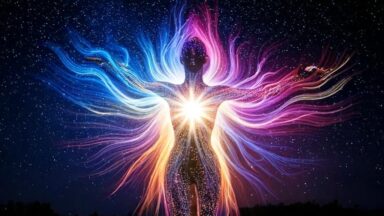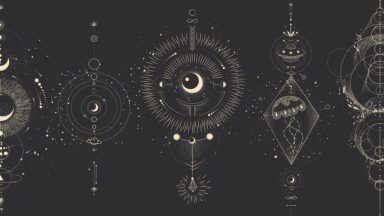The Green Man is Reborn out of Myth and Lore

With a face sculpted of leaves, herbs, and Earth elements, the Green Man sits silently overlooking gardens and kitchens, ushering in the rebirth of spring. Although many regard the figure as little more than an ornament — perhaps like a Buddha statue in a lanai — there has been a resurgence in Wicca and other Pagan traditions, honoring the spirit of the Green Man, a powerful symbol to those in touch with the ebb and flow of nature. Even those without any religious or esoteric proclivities are now embracing the Green Man by displaying his likeness in sacred spaces of their homes.
The Green Man can be found in many cultures around the world, throughout history, usually related to deities related to vegetation and the growth of food. Because the earliest peoples came to revere the process of birth, life, and death, the Green Man emerged as a mythological symbol of the renewal of the life cycle that begins in springtime.
Green Man Facts: Across Time and Place
It seems that, similar to a great many other mythic representations, the Green Man evolved throughout the world’s cultures independently. In her work, An Annotated & Illustrated Collection of Worldwide Links to Mythologies, Fairy Tales & Folklore, Sacred Arts & Sacred Traditions, Kathleen Jenks suggests, “The Green Man is that spirit, energy, presence, inherent in every cell of the vegetative realm, and transmitted to the animal/human realms through the foods we eat, the flowers we smell, the trees we hug.”
Although now well-known as the Green Man, researchers claim that this moniker only dates back to 1939, when it was used by Lady Raglan (wife of the Welch scholar and soldier Major Fitzroy Somerset, 4th Baron Raglan) in her article, “The Green Man in Church Architecture,” published in the “Folklore” journal of March 1939. Lady Raglan became infatuated with the mystery and symbology of the Green Man when visiting it’s images in St. Jerome’s Church in the village of Llangwn in Monmouthshire, Wales.
Lady Raglan wrote, “This figure I am convinced, is neither a figment of the imagination nor a symbol, but is taken from real life, and the question is whether there was any figure in real life from which it could have been taken. The answer, I think, is that there is but one of sufficient importance, the figure variously known as the Green Man, Jack-in-the-Green, Robin Hood, the King of May and the Garland King, who is the central figure in the May Day celebrations throughout Northern and Central Europe.”
But more down-to-earth researchers, focused purely on historical facts, found the Lady Raglan’s description a bit hard to swallow, especially because she had conflated several unrelated icons with the Green Man. Nevertheless, her writing was instrumental in inviting the Green Man to become seriously regarded as a valid object of historical and anthropological study. It also established the name “Green Man” as the preferred label.
Wicca, Greek Myth, and The Green Man
The Green Man is no simple symbol or supernatural icon of myth or legend. Its meaning is diverse and inspires introspection. Because it evolved out of many cultures, it means many things to different cultures around the world. To some, including those steeped in the tradition of Wicca, the Green Man is viewed as a pagan nature spirit. As such, some researchers connect it to older nature deities, such as the Celtic Cernunnos and the Greek Pan and Dionysus. Pan is the god of the wild, shepherds and flocks; and represents the untamed wilderness and is characterized by rustic music.
Riley Winters, a researcher in classical and medieval studies, explained, “The Green Man is most highly believed to have begun as a pre-Christian entity, a spirit of nature personified as a man. His earliest images have been dated long before the coming of the Christian religion, depictions dating back before the days of the Roman Empire.”
“However, it is with the coming of the empire that his images are noted as spanning religions, as he has been found both within the empire and at its borders, and then similar versions in other far reaching cultures such as India. Despite the range in locations of artifacts of the Green Man, he is most often associated with the society of the Celts, sequestered particularly in today’s Britain and France, because of the high number of images found in these regions and the stylized way in which he has been portrayed.”
Though always representing nature — often with features that are nearly imperceptible from the tree or foliage, from which it magically appears — the Green Man has many faces the world over. In early Christian churches, he often appeared over doorways and near representations of Jesus. In fact, wrote researcher Luke Mastin, “Pre-Christian pagan traditions and superstitions, particularly those related to nature and trees, were still a significant influence in early medieval times, as exemplified by the planting of yew trees (a prominent pagan symbol) in churchyards, and the maintenance of ancient ‘sacred groves’ of trees…The human-like attributes of trees (trunk-body, branches-arms, twigs-fingers, sap-blood), as well as their strength, beauty and longevity, make them an obvious subject for ancient worship.”

The green man is often associated with nature, rebirth or fertility.
The Green Man: Warning or Reminder?
As we ponder the Green Man from a 21st-century perspective, those who are more sensitive to changes and human impact on the Earth are longing for a return to nature. But the image of the Green Man reminds us that concern for the environment is actually ages-old, leading us to Plato’s ecologically cautionary words.
“Nearly 2,500 years ago,” wrote Maria Haralampopoulos, “Plato lamented over the land degradation that stripped the once lush hills of Greece…In Critias, according to Plato, ’In the primitive state of the country, its mountains were high hills covered with soil, and the plains, were full of rich earth, and there was an abundance of wood in the mountains. Of this last the traces still remain, for although some of the mountains now only afford sustenance to bees.’”
Researcher Phyllis Araneo wrote, “Whilst the figure of the Green Man has appeared, disappeared and reappeared throughout the centuries, there is evidence to show that his appearance is often linked to times of upheaval, change or environmental crisis. His emergence, however, often goes unnoticed by the population and is all too often taken for granted or simply overlooked.”
Given the tremendous crisis facing the planet and all of its inhabitants, it seems clear that the resurrection of the Green Man symbol coincides with what is perhaps humanity’s ultimate struggle. The Green Man has returned as an eerie and poignant reminder that the essence of life springs forth from the green, hallowed land that sustains it. And, unlike this cross-cultural image of earth’s lush vegetation, it beckons us to contemplate whether humankind can any longer afford to sit silently idle as the environment returns to dust.
How to Hold a Smudging Ceremony

A smudging ceremony is the ritual of burning plant resins and herbs in a shell or a clay bowl while intentions and prayers are called forth. For centuries, Native Americanand Indigenous cultures have practiced smudging rituals to clear away negative energy, to invite in peace and harmony for individuals or environments. The smoke from the herbs and the plant resins are fanned using a feather or a hand and directed like a “cleansing smoke bath” surrounding the person or the space.
The purpose of this cleansing ritual is to clear away anxieties, sadness, impurities, dark thoughts or unwanted energies that may have attached themselves to a space or an individual.
Smudging is most often performed before or as part of a ceremony to clear the environment and the people from certain thoughts or feelings that will not serve the highest good in themselves. For this reason, it is important to set a clear intention while smudging.
As the smudging ceremony is practiced, the smoke rises and so do the prayers to mother earth, father sky, to the sun and the moon, to the plants, the animals and the water. The burning of the sacred plants- sage, cedar, sweetgrass and palo santo- to name a few, support the connection to the sacred realms between the earth and spirit. Through this connect to spirit the smoke bath lifts negative feelings and energy and creates an opening for prayers and intentions to be heard, therefore bringing positive intention into practice.




































